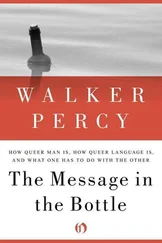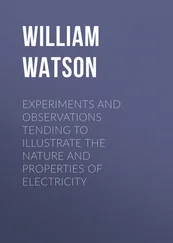amily
anguage
ine 1: Sorce of common word list
Line 2: Phonological information
ndo-Europan
nglish
m. Natl Crpus, http://americannationalcorpus.org/SecondRelease/data/ANC-spoken-count.txt
ndo-Europan
erman
ttp://wwwwortschatz.uni-leipzig.de/Papers/top1000de.txt
http://en.wikipedia.org/wiki/German_orthography
ndo-Europan
panish
ttp://en.iktionary.org/wiki/Wiktionary:Frequency_lists/Spanish1000
http://en.wikipedia.org/wiki/Spanish_alphabet
ndo-Europan
engali
ttp://wwwwebsters-online-dictionary.org/translation/Bengali+%2528Transliterated%2529/
http://www.prabasi.org/Literary/ComposeArticle.html
ndo-Europan
osnian
ttp://wwwwebsters-online-dictionary.org/translation/Bosnian/
http://en.wikipedia.org/wiki/Bosnian_language
ltaic
urkish
ttp://wwwturkishlanguage.co.uk/freqvocab.htm
http://www.omniglot.com/writing/turkish.htm
merican
nukitut
ttp://wwwwebsters-online-dictionary.org/translation/Inuktitut+%2528Transliterated%2529/
http://en.wikipedia.org/wiki/Inuit_phonology, http://www.rrsss17.gouv.qc.ca/en/nunavik/langue.aspx
merican
aino
ttp://wwwwebsters-online-dictionary.org/translation/Taino/
http://en.wikipedia.org/wiki/Ta%C3%ADno
merican
ucatec Maa
ttp://wwwwebsters-online-dictionary.org/translation/Yucatec/
http://en.wikipedia.org/wiki/Yucatec_Maya
0
frican
ango
ttp://wwwwebsters-online-dictionary.org/definition/lango-english/
http://sumale.vjf.cnrs.fr/phono/AfficheTableauOrtho2N.php?choixLangue=dholuo
1
frican
omali
ttp://wwwwebsters-online-dictionary.org/translation/Somali/
http://en.wikipedia.org/wiki/Somali_alphabet, http://en.wikipedia.org/wiki/Somali_phonology
2
frican
olof
ttp://wwwwebsters-online-dictionary.org/translation/Wolof/
http://www.omniglot.com/writing/wolof.htm, http://en.wikipedia.org/wiki/Wolof_language
3
frican
ulu
ttp://wwwwebsters-online-dictionary.org/definition/Zulu-english/
http://isizulu.net/p11n/
4
frican
aya
ttp://wwwwebsters-online-dictionary.org/translation/Haya/
http://en.wikipedia.org/wiki/Haya_language
5
ustronesin
ijian
ttp://wwwwebsters-online-dictionary.org/translation/Fijian/
http://en.wikipedia.org/wiki/Fijian_language
6
ustronesin
alagasy
ttp://wwwwebsters-online-dictionary.org/definition/Malagasy-english/
http://en.wikipedia.org/wiki/Malagasy_language
7
ravidian
amil
ttp://wwwwebsters-online-dictionary.org/translation/Tamil+%2528Transliterated%2529/
http://www.omniglot.com/writing/tamil.htm, http://portal.unesco.org/culture/en/files/38245/12265762813tamil_en.pdf/tamil_en.pdf
8
ast Asian
apanese
ttp://wwwjpf.org.uk/language/download/VocListAAug07.pdf
http://en.wikipedia.org/wiki/Japanese_phonology
Video data
Our hypothesis is that it is the physical events among macroscopic solid objects that principally drives the competencies of our auditory system, and thus coders were trained to measure sequences of hits and slides in the physical events found in videos. To avoid any potential auditory bias to hear speech-like patterns among natural event sounds, measurements were made visually (i.e., with the video’s audio muted). Measurements were made from several categories of video, each chosen because of the likelihood of finding “typical” kinds of solid-object physical events. Categories were as shown below, followed by links to the videos (and their lengths).
Cooking (23 minutes)
http://www.youtube.com/watch?v=6s__hRrQZ3E (9:29)
http://www.youtube.com/watch?v=Y36zINLldyQ (3:49)
http://www.youtube.com/watch?v=Enytl9Epfcs&feature=related (9:50)
Assembly instructions (17 minutes)
http://www.youtube.com/watch?v=fOofJFyu9s8 (1:37)
http://www.youtube.com/watch?v=Y-oPmSCIQPw (0:48)
http://www.youtube.com/watch?v=Z_8otugkqxM (2:31)
http://www.youtube.com/watch?v=hsd7vne65nA (4:55)
http://www.youtube.com/watch?v=Dd8Y5prcCos (7:39)
Children playing with toys (7 minutes)
http://www.youtube.com/watch?v=yRPoBXZcx_o (1:56)
http://www.youtube.com/watch?v=_1-TbrU8W0M (1:17)
http://www.youtube.com/watch?v=4gYMerbfYpM (1:10)
http://www.youtube.com/watch?v=O28i03T82EE&NR=1 (0:46)
http://www.youtube.com/watch?v=BSbV4U62Mg0&feature=related (1:45)
Acrobatics (8 minutes)
http://www.youtube.com/watch?v=RKoKtHzrTEw (2:22)
http://www.youtube.com/watch?v=KXpbCQ6kIVQ&feature=related (1:59)
http://www.youtube.com/watch?v=VY9g7koP8yQ (3:41)
Family gatherings (11 minutes)
http://www.youtube.com/watch?v=H11dO6tr3v4 (2:44)
http://www.youtube.com/watch?v=m_q6QRD4hLU (8:17)
These amount to 67 minutes of video in total. The average (across the three viewers) total number of events with three or fewer physical interactions (i.e., hits or slides) among these videos was 504.7. The correlations between the relative frequency distributions for the three viewers were R2 = 0.51, R2 = 0.63, R2 = 0.48. These three coders also measured from the same videos a second time, this time with the sound present; the average distribution for vision only was highly correlated with the average distribution for audition-and-vision (R2 = 0.857). Also, as part of the training for coding, a “ground truth” auditory file was created by the first author with sample physical event types, and the two coders measured, via audition only, the distribution, and had correlations of R2 = 0.63 and R2 = 0.64 with the ground truth source.












